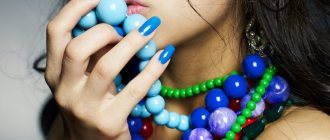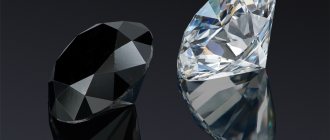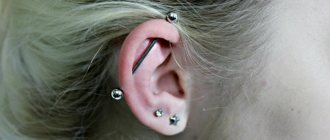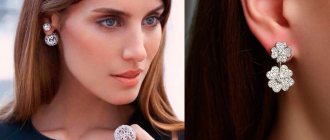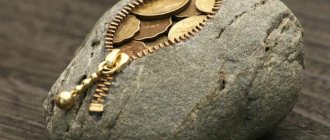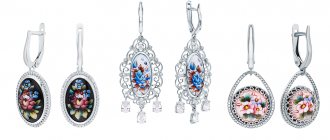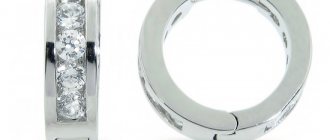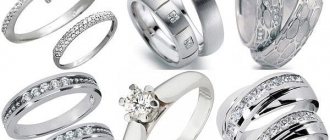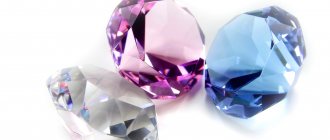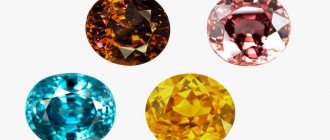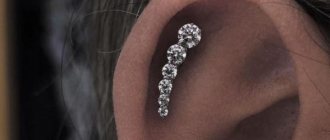So, today we will talk about what kind of piercing jewelry there are. Labret, nostril, wrap, circular - all these names of earrings are so incomprehensible... Sound familiar? Now we will try to make this all clear.
We have already written that there are bad decorations, and there are good ones. The piercing industry produces a wide variety of jewelry. They differ in the materials from which they are made, in shape, color and purpose. The introduction of high technologies in the production of earrings for piercing, the use of implantation materials improves their quality and reduces the risk of undesirable consequences.
When choosing jewelry, it is better to contact a specialist who will select it, taking into account your anatomy and recommend the right size. Our specialists are ready to suggest the most aesthetic, original option, using their wealth of experience. If necessary, we will recommend a tongue bar, a lip labret, or a nose ring.
Names of earrings for piercing
There are quite a lot of them. And here we will write about the types of good and convenient jewelry, consider their main types and applications.
Straight piercing
Barbell, barbell or just a bar
It's just a straight stick with holes drilled inside at the ends into which you can screw a ball or other twists, with or without pebbles. Used: earlobes, some cartilage punctures, nipples, tongue, bridge of the nose, sometimes septum punctures. Also used in some types of intimate piercings. Sizes: the most commonly used classic size is 1.6mm (14g). There are thinner barbells, but they are usually more dangerous to use - they can simply rupture soft tissue when jerking. For intimate piercings, it is preferable to use barbells with a thickness of 2mm (12g) or more. They vary in length - from 4.5 to 50mm - the length is selected directly for a specific puncture, because Everyone's anatomy is different.
Main types of piercing jewelry
| Barbell. Perhaps the most popular type of piercing jewelry. Consists of a metal rod with a double-sided thread and two screw-on fasteners. Less common are threadless rods with a removable nozzle. The length of the base starts from 4 mm (micro rod) and ends at 38 mm (industrial). | |
| Labret. Something like a short one-sided rod with a lock. The name of the product has become a common noun for piercing the center of the lower lip. | |
| Banana. Curved rod. Used wherever the piercing needs volume. Most often - for piercings on the face and body, occasionally - for piercings in the ears. | |
| Snail (nostril). Nose wing piercing jewelry. | |
| Twister. Can be inserted into several punctures at the same time or create the illusion of multiple punctures. Not suitable for primary piercings. | |
| Segment ring. Just a neat, even ring that fastens inward. | |
| Ring with lock. Fastens with a ball or other shaped attachment. | |
| Clicker. Figured half ring with transverse clasp. Not suitable for primary piercings. | |
| Circular (horseshoe). An open ring, held in the puncture by clamps or hanging freely. It can be not only semicircular, but also triangular, square, and heart-shaped. | |
| Microdermal. Jewelry for flat piercing. Consists of an anchor (base with a barbell) and a wrap. Microdermals with a shaped base are called skindivers. |
Labret
This is the most common decoration. If you screw a flat disk onto a barbell on one side, you get a labret. On the other hand, a ball or wrap with a beautiful stone is screwed onto it in the same way. Used: nose, earlobes and cartilage, lips, cheeks. Dimensions: ultra-thin labrets with a thickness of 1mm (18g) have recently become popular. It's like classic earlobe earrings. Labrets of 1.2 (16g) and 1.6mm (14g) thickness are often used. Thicker labrets are rarely used. With length, everything is the same as with barbells.
Ear piercing with a gun
An earlobe piercing is most often performed with a pistol. It is important to note that the vast majority of professional piercers do not recognize guns in principle. Instead, they use needles or catheters.
Ear piercing in salon
How an earlobe piercing is done by a doctor in a salon:
- The selected area is carefully treated with alcohol-containing solutions. Based on the location of acupuncture points (points, the exact location of the future hole is selected);
- Needles are inserted into the gun (they must be in a sterile container). The selected earring is placed next to the needle;
- The planes of the gun are placed above the earlobe, the needle should be located exactly above the selected and marked puncture site. Afterwards, the doctor sharply presses the handles of the device and its planes close;
- The needle pierces the skin, and the decoration is immediately pushed into the hole. The pistol is unfastened and removed from the ear, and the earring is secured with clips.
Cheat
The main element that makes you wear a beautiful piercing. This is the name of the thing that is screwed into a barbell, and at its end you get a beautiful sparkling pebble or golden symbol. Or an ordinary ball - as you like. The main types of twists are cabochon (flat uncut stone), bezel (rolled stone), prong (crystal in a frame), flat-gem (rhinestone with a flat bottom), cluster (several twists welded to each other) and twists without stones. Used: most often – lips, ears, nose, microdermals, plane punctures. Less commonly - tongues, nipples, eyebrows, navels. To the great joy of piercing lovers, they are sold separately, and it is not at all necessary to buy a new earring entirely if you want to change the old one. Moreover, they have finally made piercing an accessory that can be changed to suit different looks. Dimensions: the main parameters of the wrap are the thread, the stone, if any, and its size. According to the thread, the wraps are divided into 14g (for jewelry 1.6mm) and 16/18g (for jewelry 1 or 1.2mm thick, they have the same thread). For thicker jewelry, they are usually made to order.
How long does it take for the ear to heal and how to properly care for it?
— If you decide to pierce your ears for the first time, then you should definitely start with the lobes. The advantages of this are that healing occurs quickly and virtually painlessly.
“You shouldn’t ask the master to punch two holes in your ears at the same time.” Keep in mind that one piercing is much easier to care for than several.
— When piercing the ear cartilage, remember that it takes longer to heal and the pain is stronger.
— After a piercing, it is better not to wear gold earrings for ear piercing immediately (some alloys may contain nickel), take into account possible allergic reactions. Special medical earrings made of surgical steel or titanium are better suited.
— You should carefully monitor hygiene and treat your ear after a piercing! It is especially important to do this at first! Do not touch your ears with dirty hands. Lubricate two or three times a day with an antiseptic solution, this should be done every time and if you accidentally touch it with your hand. It is allowed to wipe the wound with Miramistin or Chlorhexidine. Medical glue is used for small children; it is safe and effectively prevents suppuration and eliminates inflammation. Be careful when handling the ear cartilage ring. Try not to change earrings during the entire healing period.
Ear care after piercing
— In the first month, you need to rotate the earring several times a day, but under no circumstances take it out. This helps heal and remove accumulated ichor, blood and dirt, preventing infection.
— If your earlobes hurt at the puncture sites or there is suppuration, immediately consult a doctor for examination and further instructions. Try not to self-medicate!
- If you are in doubt about whether to get a piercing, try wearing clips or, for example, cuffs - this is what an earring that covers the entire ear is called, translated from English as “cuff.” This type of decoration has been known to history for a long time and is found among various cultures. Cuffs can even become part of a hair clip. No puncture required! Perhaps a pair of ear cuffs will help you decide on a piercing faster.
Remember that it is best to entrust the puncture procedure to professionals in various medical centers or beauty salons. The masters will always be able to tell you in which places you can pierce your ear, and they will tell you about all the nuances and features of this or that type of piercing. They will advise you on how long it takes for the ear to heal and how to properly care for it.
Banana
This is the name of a piercing earring - a barbell, but curved around the circumference, in the shape of a banana. Used: navel, eyebrow, Snag and Rook cartilage puncture. Also used in some types of intimate piercings. Sizes: As with barbells, the classic size 1.6mm (14g) is most often used. There are thinner bananas, but they are usually more dangerous to use - they can simply rupture soft tissue when pulled. For intimate piercings, it is preferable to use bananas with a thickness of 2mm (12g) or more. They vary in length - from 6 to 14mm - the length is chosen directly for a specific puncture, because Everyone's anatomy is different.
Pain and healing of cartilage punctures
Each person has his own pain threshold, which can vary greatly. For some people, cartilage puncture is comparable to mild discomfort, for others it is considered very painful. Compared to lobe piercing, cartilage puncture is more painful.
These punctures require quite a long healing time - up to 4-6 months. During this period, wounds can sometimes bleed and cause pain. These problems often do not arise if you strictly follow the recommendations of the masters regarding the care of your piercing. Also, during the healing period, it is not recommended to twist gold earrings; it is advisable to sleep on the opposite side, and the wounds should be constantly treated with special solutions. It is worth considering that minor swelling, itching and painful discomfort during the first few weeks are completely normal. But if they do not go away over time, you should seek help from specialists.
Clamping ring with ball
Although this jewelry is also a ring, it “closes” in a completely different way. The ball has two indentations (grooves) on both sides. A ring snaps into them. That is, this structure is held in place due to the elasticity of the ring. The element that is held in the ring can also be removable. If we want, we put a metal ball, we want a beautiful crystal! Used: septum puncture, Daith puncture, lobes. If we talk about completely healed piercings (from 3 months): nipples, navel, eyebrow, ears, lips, nose. Dimensions: same as circulars, diameter from 6 millimeters, thickness from 1 mm.
Types of cartilage puncture
There is a wide range of types of ear cartilage punctures. Below are the main ones:
- The arm is an opening passing between two zones of cartilage.
- Antitragus is a puncture of the cartilage located above the earlobe.
- Helix is a piercing, as a result of which the jewelry is inserted horizontally along the edge of the ear.
- Orbital is a combination of two holes in the ear.
- Days is a puncture of the cartilage located above the auditory canal, from top to bottom.
Segment ring
This is essentially the same as a ball clamp ring, but instead of a ball, a piece of the ring itself is used. This way, when the ring is fastened, it looks like a simple monolithic ring. Used: septum puncture, Daith puncture, lobes. If we talk about completely healed piercings (from 3 months): nipples, navel, eyebrow, ears, lips, nose. Dimensions: segment rings are most often from 1.6mm in thickness. Diameter from 6mm.
How to choose jewelry according to the type of piercing
Ears
Days is a ring.
Industrial - barbell.
Orbital is a ring with a lock.
Shell punctures – microbananas and microbars.
Lobe piercings - any decoration.
Tragus (tragus) – with an attachment or pendant, ring, clicker.
Helix (cartilage) – microbar.
Forehead
Microdermal.
Nose
Bridge (vertical, horizontal) – microbanana or microbar.
Nostril – snail, microlabret, ring, stud.
Septum – circular, clicker, ring.
Lips
Dahlia (Deliya), jellyfish, Monroe, Madonna – labrets.
Labret – a labret, on a healed one you can put a ring or a twister.
Symmetry (“cyber”, “spider bite”, etc.) – labrets, rings, twisters.
Smile – ring, circular, micro banana.
Ashley (estrum, vertical labret) – banana.
Cheeks
Labrets from 1.6 mm long.
Eyebrow
Microbananas, microbars, small rings for healed punctures.
Language
The rod is from 1.6 to 2 millimeters long.
Frenulum (bridle) – microbanana or circular.
Nipples
Barbells with and without attachments, clickers, circulars, rings. You can use a twister on a healed puncture. Piercing in the shape of a safety pin looks aesthetically pleasing, but is not recommended for everyday wear - it can be considered, rather, a type of play piercing.
Navel
Microbanana, microbar. You can put a clicker or a small ring on your exposed belly.
Female intimate piercing
Vertical punctures - micro banana.
Horizontal punctures - a ring with a retainer, a horseshoe.
Christina – L-barbell (special barbell).
Twister
If you take a circular piece and move its ends apart from each other, it will become part of a spiral with one turn - a twister. There are spirals with different numbers of turns. Used: if we talk about completely healed punctures (from 3 months): nipples, navel, eyebrow, ears, lips, nose. Dimensions: Typically 1.6mm thick. Diameter from 8mm.
Clicker
This septum piercing jewelry was originally created by the designers at Industrial Strength. It is called so because of the clicking sound that is heard when closing/opening the jewelry. Later, models of clickers began to appear for the navel, for piercing the daith, the wing of the nose, etc. Used: piercing the septum, piercing the Daith, some types of clickers are suitable for the wing of the nose or the navel. Dimensions: stick length – 6mm. The height (distance from the stick to the ring) is 6, 8 and 10 mm. The remaining sizes of clickers do not change and depend on the model.
What methods of nose piercing exist?
The main options are:
- Nostril - the simplest type of piercing, involves piercing the wings of the nose. It is considered the most harmless, because it is not accompanied by damage to blood vessels and nerves;
- bridge – involves puncturing the skin at the top of the bridge of the nose. It is located above the eyes, but below the eyebrows;
- Austin Bar - the soft tissue of the nose is pierced at the tip parallel to the lips;
- septum - a puncture of the nasal septum. Experienced professionals perform it at the junction of cartilage to make the procedure the least painful and traumatic.
These are the most common and affordable piercing options. The remaining types are more complex and traumatic, and are practically not in demand due to the complexity of execution and pain.
Flat Bar or Surface Bar
This is a special jewelry for punctures on flat areas of the body, which comes out at an angle of 90 degrees to the surface of the skin. Wraps, usually flat, are screwed onto the ends of this rod. They come with a round section and a flat section of the part of the bar that is under the skin. Used: depending on the location, its mobility and skin structure. Dimensions: length varies from 10 to 40mm. You need to understand that the longer the barbell, the longer the puncture will take to heal, so starting from 25mm you should think about an alternative piercing - a pair of microdermals.
Decoration selection
Everything for piercing is individual and requires proper selection of jewelry . If you choose the right jewelry for your piercing, the healing process will significantly improve and reduce the risk of inflammation; the wearing period will bring only joy and comfort. First of all, pay attention to the material of the jewelry - gold, silver, medical (surgical) steel are not suitable for wearing punctures, they contain harmful impurities that oxidize during wearing and cause inflammation (this is especially dangerous during the initial healing of the puncture).
Also on gold and silver jewelry there is an engraving of the test, which injures the puncture. A high-quality piercing jewelry should be made of titanium; this is one of the most hypoallergenic metals at the moment.
Microdermal
It's like a flat bar, but without the second outlet, i.e. the inner end is, as it were, implanted under the skin. We wrote more about this in the article about microdermals.
Dimensions: available from 2 to 4mm in height. In Russia, the thread in microdermals corresponds to 14g (1.6mm), but microdermals can also be found with other, incompatible threads. They are covered with the markups that we wrote about above.
